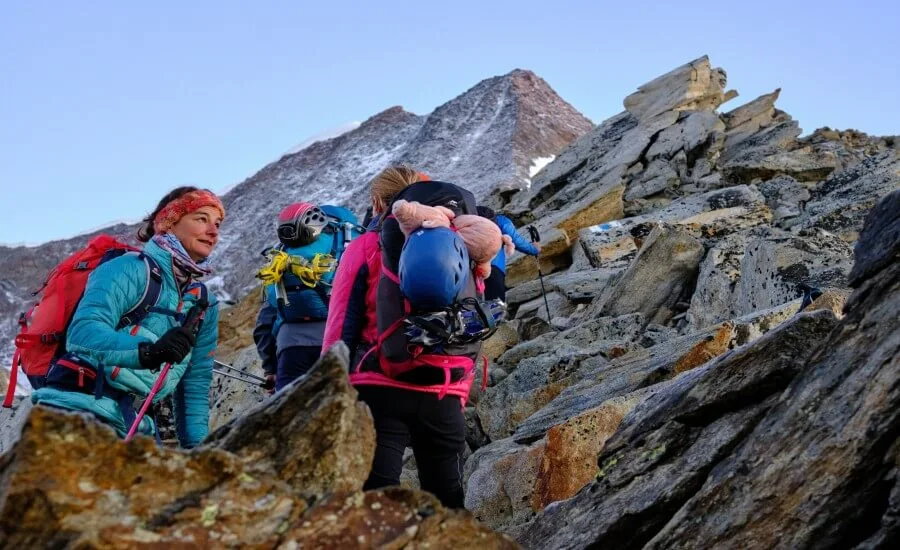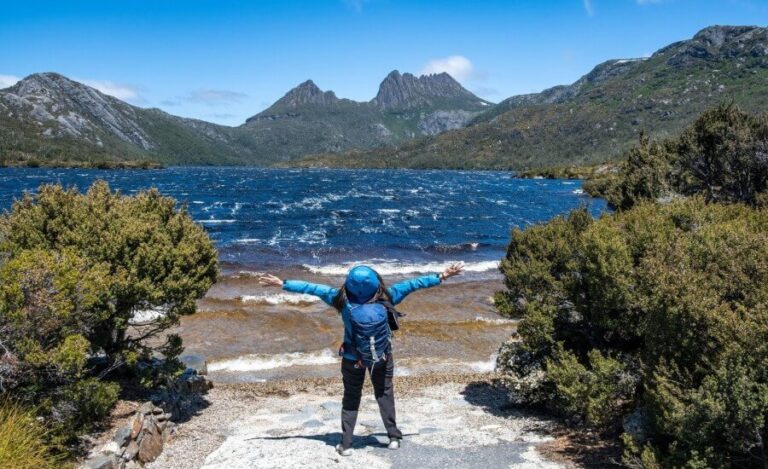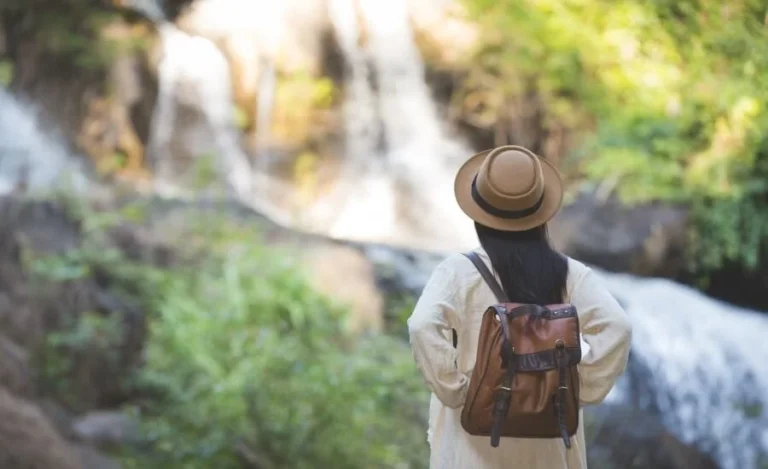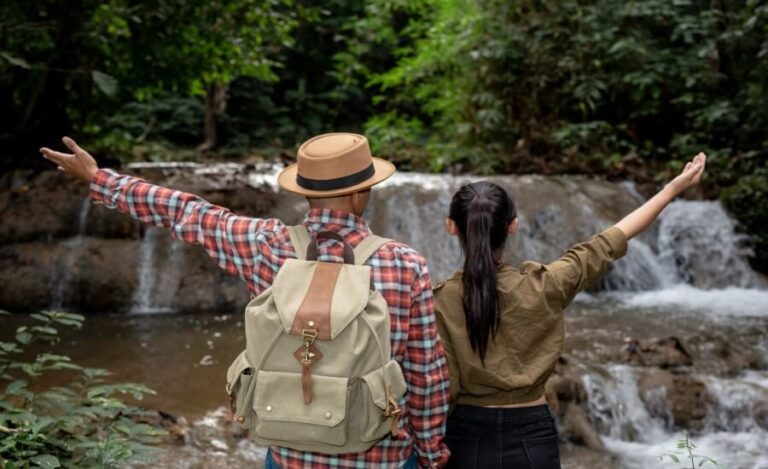
The Seven Summits – the very phrase evokes images of breathtaking scale, extreme challenge, and the ultimate mountaineering achievement. Standing atop the highest point on each continent represents a pinnacle of physical endurance, technical skill, and logistical prowess. For many climbers, it’s the dream of a lifetime. But beyond the sheer physical exertion, the frozen landscapes, and the thin air, lies another, perhaps even more profound, challenge: the journey within. This guide explores best tips for mindful mountaineering on the seven summits hiking.
The mental fortitude required to face extreme conditions, manage fear, maintain focus, and push onward when every fiber of your being screams for warmth and oxygen is immense.
This is where a mindful approach becomes not just beneficial, but potentially transformative.
We won’t just list peaks and gear; we’ll delve into how principles of mindfulness, presence, and intentionality can enrich the experience, enhance performance under pressure, foster resilience, and deepen the connection to these majestic, unforgiving environments.
It’s about approaching these giants not just as conquests, but as sacred opportunities for self-discovery and presence, even amidst the necessary reliance on modern technology.
The Roofs of the World: Understanding the Seven Summits Challenge

The concept of the Seven Summits challenge, popularized in the 1980s, involves reaching the highest peak on each of the seven continents. There are actually two main recognized lists, differing slightly based on the definition of the Australian continent/Oceania:
- The Bass List: First completed by Richard Bass, includes:
- Asia: Mount Everest (Nepal/China) – 8,849 m / 29,032 ft
- South America: Aconcagua (Argentina) – 6,961 m / 22,838 ft
- North America: Denali (USA – Alaska) – 6,194 m / 20,322 ft
- Africa: Kilimanjaro (Tanzania) – 5,895 m / 19,341 ft
- Europe: Mount Elbrus (Russia) – 5,642 m / 18,510 ft
- Antarctica: Vinson Massif – 4,892 m / 16,050 ft
- Australia: Mount Kosciuszko (Mainland Australia) – 2,228 m / 7,310 ft
- The Messner List: Championed by Reinhold Messner, substitutes Kosciuszko with:
- Australia/Oceania: Puncak Jaya (Carstensz Pyramid) (Indonesia) – 4,884 m / 16,024 ft (This version is generally considered more technically challenging).
Completing either list is a monumental undertaking requiring years of training, significant financial investment, extensive travel, and navigating extreme environments ranging from tropical glaciers (Carstensz) to Antarctic cold and Himalayan high altitude. It tests climbers physically, technically, and profoundly, mentally.
Beyond Oxygen & Ice Axes: The Crucial Role of Mindful Presence

Climbing any high-altitude peak, let alone the Seven Summits, is as much a mental game as a physical one. The extreme environment – low oxygen (hypoxia), intense cold, unpredictable weather, objective hazards – exerts immense pressure on both body and mind.
Research shows high altitude can directly impact mood (increasing anxiety, depression, irritability) and cognitive function (impairing memory, focus, judgment, decision-making). Acute Mountain Sickness (AMS) further exacerbates these issues.
This is where mindfulness becomes a critical tool, not just for well-being, but for safety and performance:
- Managing Fear & Anxiety: Mindfulness teaches us to observe fear without being consumed by it, allowing for calmer, more rational decision-making in high-stakes situations.
- Maintaining Focus: The ability to stay present and focused on the task at hand – the next step, the current anchor, managing rope systems – is vital when fatigue and hypoxia impair concentration.
- Emotional Regulation: Recognizing and accepting difficult emotions (frustration, discomfort, doubt) without reacting impulsively helps maintain composure and team cohesion.
- Accurate Self-Assessment: Body awareness cultivated through mindfulness helps climbers better recognize early signs of AMS, fatigue, or cold injury, prompting necessary action like slowing down, hydrating, or turning back.
- Coping with Discomfort: Mindfulness fosters acceptance of unavoidable discomfort (cold, fatigue, boredom during acclimatization), reducing mental suffering even when physical hardship is present.
In environments where poor judgment can have severe consequences, a trained, present mind is as essential as a strong body and reliable equipment.
One Breath, One Step: Mindfulness Techniques on the Ascent

Integrating mindfulness into the grueling reality of a high-altitude climb involves applying simple techniques consistently, turning the ascent itself into a moving meditation.
- Breath as Anchor: The breath is always available. Focusing on the sensation of breathing – the cool air entering, the effort of exhaling in thin air – anchors you firmly in the present moment, especially during strenuous sections or moments of fear. It also helps regulate physiological responses.
- Mindful Movement: Pay full attention to each step. Feel the crunch of crampons on snow, the placement of your ice axe, the balance required on uneven terrain. Focus on smooth, efficient, deliberate movement rather than rushing or being lost in thought about the summit.
- Body Scan Awareness: During rests or at camp, mentally scan your body from head to toe. Notice areas of tension, cold, fatigue, or discomfort without judgment. Check for warning signs (numbness, headache). This builds crucial awareness of your physical state.
- Sensory Engagement: Tune into the unique sensory environment. Notice the intense blue of the high-altitude sky, the stark beauty of snow and rock, the sound of the wind, the feeling of intense cold or sun. Engaging senses grounds you in the ‘here and now’.
- Acceptance of ‘What Is’: Acknowledge the reality of the moment – the fatigue, the cold, the slow progress – without resistance or excessive complaining (internally or externally). Accept the conditions and focus on the next appropriate action.
- Mindful Pauses: Utilize scheduled rest stops not just for hydration and fuel, but for a few conscious breaths, a quick body scan, and a moment of appreciation for the surroundings and your progress so far.
These practices help manage the immense physical and mental demands by breaking the overwhelming challenge down into manageable, present moments.
Finding Presence Amidst Peaks & Tech: Mindful Use of Tools

Let’s be clear: high-altitude mountaineering on the Seven Summits is inherently reliant on technology for safety and navigation.
GPS devices, satellite phones/messengers, sophisticated weather forecasting, and advanced technical gear are indispensable tools, not luxuries to be easily discarded for a purely “tech-free” ideal. The mindful approach here isn’t about eliminating essential tech, but about using it consciously and preventing unnecessary digital distraction.
- Purposeful Tech Use: Engage with devices (GPS, satellite messenger, camera) for specific, intended tasks, then put them away. Avoid compulsive checking or mindless scrolling during precious rest periods or moments that invite presence. Conserve crucial battery life.
- Prioritizing Direct Experience: When conditions allow, make a conscious choice to experience the view, the summit moment, or the camp atmosphere directly through your senses first, before reaching for a camera or communication device.
- Valuing Analog Backups & Skills: While relying on GPS, maintain proficiency in basic map and compass skills as a crucial backup. Understanding natural navigation cues (sun, stars, terrain features) adds another layer of connection and self-reliance.
- Mental Disconnection: Practice disconnecting mentally from the outcome (reaching the summit), from external pressures (sponsors, social media updates), and from excessive worry about future sections of the climb. Focus on the current process, the step you are taking now.
- Filtering Notifications: If using satellite communication, be intentional about filtering incoming messages. Focus on essential safety/logistical information rather than getting drawn into non-urgent digital conversations from the world below.
Mindfulness here means recognizing technology as a vital tool in service of the journey and safety, but not letting it become the focus of the experience or an unnecessary source of distraction from the profound reality of the mountain environment.
The World From Above: Perspective, Gratitude & Awe on the Summit

Reaching the summit of one of the world’s highest peaks is an extraordinary accomplishment. Approaching this moment mindfully amplifies its significance beyond mere peak-bagging.
- Mindful Arrival: As you take the final steps, try to be fully present with the sensations – the burning lungs, the pounding heart, the immense effort, the first glimpse of the summit marker.
- Sensory Immersion (Summit Permitting): Weather and conditions permitting, take time on the summit to simply be. Feel the wind, notice the quality of the light, gaze at the incredible panorama spreading below and around you. Try to absorb the vastness through your senses, not just through a camera lens.
- Cultivating Awe: Allow yourself to feel the sense of awe inspired by the scale of the landscape, the accomplishment, and your own smallness within the grandeur of nature. Awe has been linked to increased feelings of connection and pro-social behavior.
- Practicing Gratitude: Feel gratitude – for your body’s strength, for your team’s support, for the mountain allowing safe passage, for the opportunity to experience such a place. Express it internally or perhaps verbally to teammates.
- Gaining Perspective: Looking down on the world from such heights often provides a powerful shift in perspective on everyday problems and priorities. Reflect on what truly matters.
While summit photos are important records, the mindful experience – the feeling, the presence, the perspective gained – is the enduring internal reward.
Respecting the Giants: An Ethical & Mindful Climbing Approach

Climbing the Seven Summits carries significant responsibilities. A mindful approach extends beyond personal experience to encompass respect for the mountains themselves, the local cultures, and the broader climbing community.
- Leave No Trace (LNT): This is paramount in fragile high-altitude environments. Pack out absolutely everything – all trash, food waste, human waste (using designated methods like WAG bags where required), even tiny gear scraps. Stay on established routes to minimize erosion. Avoid disturbing wildlife. Minimize campfire impact (often not feasible/allowed at high altitudes anyway).
- Environmental Stewardship: Be conscious of the environmental footprint of your expedition (travel, logistics). Support guiding companies with strong environmental policies. Participate in clean-up initiatives if possible.
- Cultural Sensitivity & Support: Respect local customs, traditions, and sacred sites near the mountains. Engage respectfully with guides, porters, and local communities. Choose operators who provide fair wages, safe working conditions, and contribute positively to the local economy. Support organizations working for porter welfare.
- Risk Awareness & Responsibility: Acknowledge the inherent dangers. Make informed decisions based on conditions, personal ability, and team safety. Don’t let summit fever override sound judgment. Know when to turn back – reaching the summit is optional, returning safely is mandatory.
- Humility & Gratitude: Approach these massive peaks not as adversaries to be conquered, but as powerful natural forces to be respected. Cultivate gratitude for the privilege of being in these incredible places.
A mindful climb honors the mountain and the entire ecosystem – environmental, cultural, and human – that surrounds it.
Climbing the Seven Summits: A Mindful Mountaineer Perspective

Embarking on the challenge of Climbing the Seven Summits is an undertaking of immense scale. Viewing it through a mindful mountaineer perspective transforms it from a purely physical or logistical feat into a profound inner journey. It involves bringing conscious awareness to each breath, each step, each decision made in extreme environments where focus and emotional regulation are paramount for survival and success.
This approach means acknowledging the vital role of technology for safety and navigation, but using these tools intentionally while prioritizing direct sensory experience and cultivating analog skills as valuable backups. It means finding presence amidst the physical hardship, managing fear not through suppression but through awareness and breath, and approaching the mountains with respect and humility.
It requires rigorous physical training, yes, but equally important is training the mind – cultivating focus, resilience, self-compassion, and the ability to stay grounded when facing the overwhelming power of the world’s highest peaks. Ultimately, the mindful mountaineer understands that the true summit is not just the physical peak, but the inner landscape navigated along the way.
Common Concerns & Solutions for Seven Summits Aspirants

Pursuing the Seven Summits naturally involves significant concerns.
Concern 1: “The cost is astronomical!”
- Solution: Yes, it’s extremely expensive (Everest, Vinson particularly). This requires long-term financial planning, saving, potentially seeking sponsorships (difficult for non-elites). Focus on one peak at a time, often starting with less expensive options like Kilimanjaro or Elbrus to gain experience and confirm commitment.
Concern 2: “Isn’t it incredibly dangerous?”
- Solution: Yes, high-altitude mountaineering carries inherent, serious risks (altitude sickness, falls, avalanches, extreme weather). Mitigation involves rigorous training, choosing reputable guide services with strong safety records, meticulous planning, acclimatization, making conservative decisions, respecting conditions, and knowing when to turn back. Risk can be managed but never eliminated.
Concern 3: “Do I need to be a professional athlete?”
- Solution: You need exceptional physical endurance and strength, built through dedicated, specific training over years. Mental toughness is equally crucial. While professional athletes have advantages, dedicated ‘amateur’ mountaineers achieve the Seven Summits through immense commitment to training and preparation.
Concern 4: “What about the environmental and ethical impact?”
- Solution: Choose guiding companies with proven commitments to sustainability and ethical treatment of local staff (fair wages, proper gear, load limits). Strictly adhere to Leave No Trace principles yourself. Consider supporting organizations working on mountain conservation or porter welfare. Make conscious gear choices (repair, secondhand).
Concern 5: “What if I fail to summit one or more peaks?”
- Solution: Adopt a mindful perspective on success. Define success not solely by reaching the summit, but by the effort, the learning, the experience, and returning safely. Mountaineering involves factors beyond your control (weather, health). Cultivate acceptance and view non-summits as part of the journey, offering valuable lessons.
Mindful Seven Summits Aspirant’s Checklist

Preparing for such a challenge requires holistic readiness:
- Peak-Specific Research: Thoroughly understand the chosen summit’s route, technical difficulty, typical conditions, logistical requirements, cultural context, and objective hazards.
- Physical Training: Long-term, dedicated endurance training (cardio, strength, hiking with heavy pack). Altitude-specific training or acclimatization strategies are crucial.
- Technical Skills: Depending on the peak, acquire and practice necessary skills (ice axe/crampon use, rope work, crevasse rescue, rock climbing). Consider professional courses.
- Mental & Mindfulness Training: Develop practices for focus, stress management, fear management, and presence under pressure (meditation, breathwork, visualization).
- Gear Preparation: Acquire and test all necessary technical climbing gear, high-altitude clothing layers, camping equipment. Ensure everything is in excellent condition. (Note: This includes essential safety tech like GPS/Sat phone).
- Guide Service Selection (If applicable): Research and choose reputable operators with strong safety records, experienced guides, and ethical practices.
- Logistics & Permits: Arrange flights, visas, permits, insurance (specialized for high-altitude mountaineering).
- Analog Backups: Pack and know how to use paper maps and compass for the region. Have offline digital maps downloaded.
- Leave No Trace & Ethics: Review LNT principles specific to mountain environments. Understand ethical considerations regarding local staff/culture.
- Mindset: Cultivate humility, patience, resilience, adaptability, and a focus on the journey and safe return, not just the summit.
The True Summit Lies Within

Climbing the Seven Summits is a lure for the adventurous spirit, a call to test one’s limits against the planet’s most formidable peaks. Yet, viewed through a mindful lens, the challenge transcends mere physical conquest.
It becomes an unparalleled opportunity to practice presence in the face of extremity, to cultivate resilience amidst discomfort, to manage fear through breath and awareness, and to gain profound perspective from the literal top of the world.
The mindful mountaineer understands that while reaching the physical summit is a goal, the true summit is the state of focused, calm, compassionate awareness cultivated along the arduous path.
You’ve explored the nature of this epic challenge, the critical role of mental fortitude and mindfulness at high altitude, specific techniques for staying present during the climb, the importance of ethical considerations, and how to approach preparation holistically.
Whether you aspire to climb one summit or all seven, or simply seek to bring more presence to your own life’s challenges (perhaps starting with treks closer to home, like exploring Gujarat’s Girnar Hill), the principles remain the same.
Train the body, yes, but equally, train the mind. Practice presence, embrace the journey breath by breath, step by step, and discover that the most profound peaks are often conquered within.
Tech-Free Activity Guide (Adapted: Mindful Mountaineering Practices)

Even amidst essential technology, cultivate presence on the mountain with these mindful practices:
- Breath Awareness Breaks: During scheduled rest stops, dedicate 2-5 minutes solely to noticing your breath. Feel the cold air enter, the effort of your lungs, the rhythm. Use it as an anchor to the present moment, calming your nervous system.
- Mindful Walking on Approach/Lower Slopes: On less technical terrain, focus intently on the sensation of each step. Feel your boots connect with rock, snow, or ice. Notice the balance shifts in your body. Sync your steps with your breath if helpful.
- Body Scan at Camp: Before sleep or upon waking in your tent, mentally scan your body from toes to head. Notice areas of warmth, cold, tension, fatigue, or tingling without judgment. This increases awareness of your physical condition.
- Sensory Check-ins: Periodically pause (when safe) and deliberately notice: What can I see right now (texture of snow, color of sky, distant peaks)? What can I hear (wind, own breath, crunch of snow)? What can I feel (cold on face, pressure of pack, sun’s warmth)?
- Mindful Hydration/Eating: Pay full attention when drinking water or eating an energy bar during a break. Notice the taste, texture, the sensation of swallowing, and the feeling of energy returning. Express silent gratitude for the fuel.
- Focus on the Immediate Task: When navigating a tricky section (crevasse crossing, steep slope), bring laser focus to the immediate actions required – foot placement, axe placement, rope management. Block out summit thoughts or anxieties about later sections. Practice one step, one move at a time.
- Summit/View Appreciation (Device Down): When reaching a viewpoint or the summit (if conditions allow), intentionally spend the first few minutes without a camera or phone. Simply absorb the vista, the feeling of accomplishment, the vastness, through your own senses first.
- Journaling Reflections: At camp, use a physical notebook (kept warm!) to jot down brief reflections – challenges faced, moments of beauty, feelings encountered, lessons learned.






